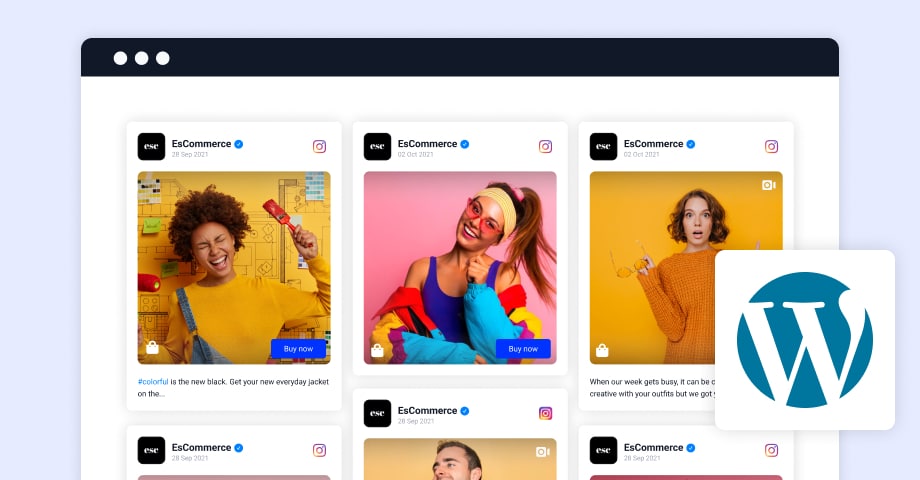Higher education has hardly evolved in the past few years.
There are still giant auditoriums where professors listen to themselves speak for 3 hours. There are still instructors who read from the book and quietly mumble “Any questions?” before quickly moving on. There are still educators who blame the student if they’re failing.
It sucks for students. It sucks for the professors. It sucks for everybody.
And the worst part is: this mediocrity is invading online education!
Yes, I’m talking about those online courses we’ve all bought. The ones with the empty promises of a better life… and a Lamborghini… if you just buy their system.
What makes it so bad?
(Warning: Mini-rant ensuing.)
They have the nerve to call themselves online courses when they are just info dumps.
Like the professor who lectures just to hear his own voice, these course creators are not interested in creating change. They just want to shove as much information in your head, so you don’t regret spending your money on them.
But if you truly want to teach, educate, provide clarity, and create change, then you need to make your course as engaging as possible. And that’s getting harder nowadays since in an online course, you’re not physically present to command the learner’s attention.
So how do you foster true learning, you ask?
By focusing on your course’s visuals.
One study on active learning revealed that the average person retains 10-20% of a spoken lecture after three days. Pathetic!
But when you add visuals, the retention climbs to 65%! Higher retention means a higher success rate. Which is good for both your students and you.
But there’s a second piece to this.
It’s a no-brainer to add images. But it’s not about spicing up your course with any old images. The wrong types of imagery can backfire, making your students even more perplexed than ever.
Great imagery breaks down hard-to-understand concepts and allows students to absorb your training.
The Power of Visuals
On a quiet Sunday, I watched a course called How to Play Guitar.
The introductory video was so mesmerizing that I got sucked in and ended up watching the entire 10-day course in just a few hours.
The visuals were well done. The edits shifted between the instructor and close ups of the guitar. And the visuals reinforced the training.
The successful mashup of his teaching and his visual breakdowns made me GET IT! Now, if a man threatened me at gunpoint to play “Stairway To Heaven,” I think I can strum my way out of it.
BTW, I don’t even own a guitar!
How would you like your courses to be as effective and memorable as that guitar course? Learn how to use visuals to mesmerize your students and reinforce the change they will experience with your course.
7 Do’s and Don’ts to Course Images That Don’t Suck
I’ve broken this guide into two parts: Don’ts and Do’s. Let’s start with the Don’ts first so we can nip bad habits in the bud. Then we’ll talk about the Do’s, so your visuals will make the best impact for your students.
1. DON’T Be Boring.

According to WIRED’S study, the average movie trailer today changes camera angle 38 times a minute. Rule of thumb: In a video, aim to change the visuals at least once every minute.
Additionally, the worst thing you can do is launch into a monotonous monolog on top of a beautiful image for too long.
2. DON’T force images into your course just for the heck of it.

When your students are in the flow of learning, the last thing they need is for a visual image to break their concentration with a jolt. They will lose focus.
Your students are going to ask: “What’s the point of showing that girl? Why is she touching her hat? What am I supposed to do with this information?”
My question for you: How exactly does this image help reinforce your idea?
Think of your online course as a nice dinner… the education you’re presenting is the main dish, and visuals are the seasoning. Your visuals are supposed to enhance the main course, not distract from it.
3. DON’T try to be cute with your art.

Are you guilty of using BBIs?
BBIs are Bad Beautiful Images. BBIs are beautiful images that don’t add value to your course. Sure, a beautiful image grabs attention. But if you already have your students’ attention, then your course images should provide clarity.
“Are you guilty of using BBIs in your online courses? ”
Watch this example from our Course Builder’s Laboratory program:
In the first 30 seconds of the video, we show a bunch of beautiful images that don’t add clarity to the course message. In the last half of the video, the visuals focus on making the lesson clearer for the students.
After watching the whole video (brah-it’s 1 minute long-do it!), can you remember anything from that first half? If you’re like most people, probably not. You were too mesmerized by the pretty images that you probably stopped paying attention to the instructor.
The “Kill Your Darlings” rule of writing applies to visual images as well. No matter how much you love the images you’ve chosen, if they don’t help make your course content clearer, then you must remove them.
You’ll know if you did a bad job if students comment on your visuals and not your teaching.
What You Should Be Doing
Now that we pointed out some Don’ts, here are some Do’s that you should implement in your online course.
4. DO know where to find great art.
The internet is cluttered with ultimate guides on where to find great images for your online course. I like Buffer’s guide to stock art (the beautiful photographs) and Creativeblog’s guide to vector artwork (logos, icons, and symbols).
While free is always good especially when you’re just getting started, free stock art sites lack the wide range of visuals you may need. If your course references performing yoga on your roof, you’re not going to find it on a free site.
But on a paid stock art site like Fotolia, the keyword phrase “yoga on the roof” yields the following results:
Boom –> 790 options!
Mirasee currently uses the following image subscription services: Fotolia, Pond5, and Flaticon. There are many others available. Shop around.
If you’re new to stock art, here’s a tip: Get just the right image size you need. Don’t pay more for larger images, if you don’t need them.
For example, Mirasee courses are presented as HD videos at 1920×1080 resolution. This means:
- Great stock photo size = 2000x
- Bad stock photo size = 200x
- Overkill = 8000x
If your course is at 4k resolution, then aim for the bigger images.
Remember, it’s easier to scale down images than it is to scale up. But there’s no point in paying extra for huge images you won’t use.
5. DO learn how to make your own art.
Stock photos can only go so far.
If you need to explain how thought processes work in your course, you’re probably not going to find the appropriate visuals on a stock photo site like pexels.com.
You can either spend a lot of time verbally explaining it, or show what you mean in a quick visual, like this:
The free Coursera course on Learning How to Learn explains the thought process with the help of a simple visual.
Imagine if they instead went with a pure lecture! It would have been so confusing!
For Mirasee’s courses, we use Photoshop to create our own visual designs. This includes everything from overlaying text on images, to making graphs and charts, to modifying photos.
Photoshop is pricey, though, and has a steep learning curve. Alternatives to Photoshop include:
- If you need an all-around graphic editor, try Pixlr and Paint.net.
- If you need to make charts and graphs, look to using a platform like Plot.ly or making it out of a spreadsheet software like Google Sheets or Microsoft Excel.
- If you need to overlay text on images, Canva can help.
- If you need to make a flowchart, check out Flow.io.
- Our courses frequently show sales pages and websites to use as examples. I use web-capture.net to grab the whole website page.
Additionally, if you’re creating your own art work, you may want to learn more about composition, color theory, and UI design .
6. DO match emotions with images.
How does this image make you feel?

I bet you couldn’t help but shift your face to match the photo. We “borrow” the emotions expressed in images we see.
Comic books have been using this secret weapon for decades.
If you want to be a great storyteller through visuals, Understanding Comics by Scott McCloud is a must-read.
In this lesson in our course, The Art of Offer Craft, we explain why pitting features and benefits against each other can be outright wrong.
When you explain the technical specifications of a computer to a grandmother, she’ll be confused. But explain those same specifications to a tech nerd, and he’ll be outright excited. The emoticons reflect the emotions we’re referring to.
7. DO whatever it takes to provide clarity.
What better way to describe a fork in the road than a picture of a fork in the road?
In that context, the image makes perfect sense.
But imagine you were expressing the idea of “the easy road and the hard road.”
Then this image no longer makes sense. It doesn’t show a clear-cut “easy road” or “hard road.” They both look the same.
How do you fix it? How about adding some text to it.
You: “But Rocky, adding text on top of a photo is so gauche….”
Rocky: “It doesn’t matter.”
You’re not submitting your artwork to the Louvre.
In an online motorcycle training course, you might see something like this.
It’s not going to win any awards for best visuals. But it can save people’s lives.
Wrap-Up
Your course visuals are vital to reinforcing your teaching. With so many online courses just a mouse-click away, the courses that create change and help students evolve will rise to the top. The ones that are mere info-dumps will fade away.
Make your course the one that changes your students’ lives. Boost their learning and comprehension by using images effectively.
What’s your biggest challenge when it comes to finding and choosing visuals for your course?
Cheat Sheet: 5 Steps to Choose an Online Course Platform
Narrow your choices, clarify your needs, and find your ideal match!



